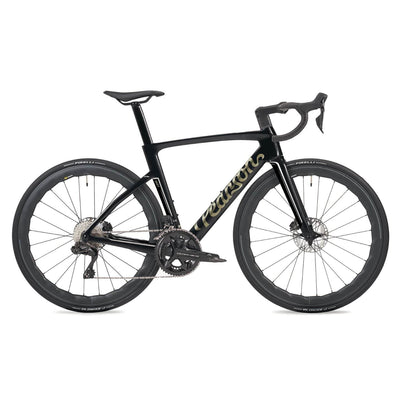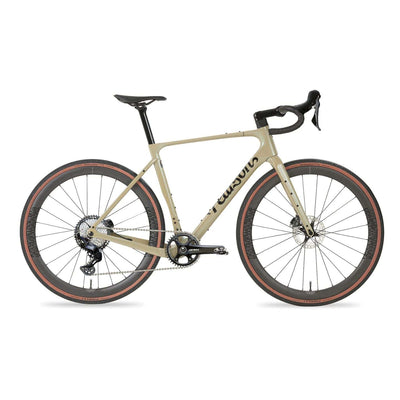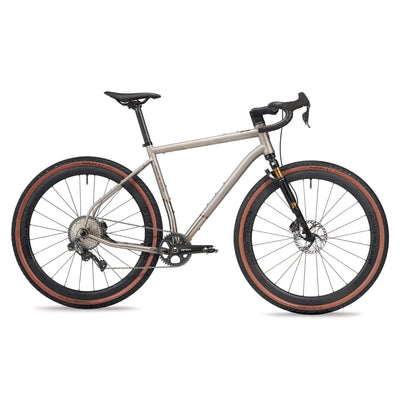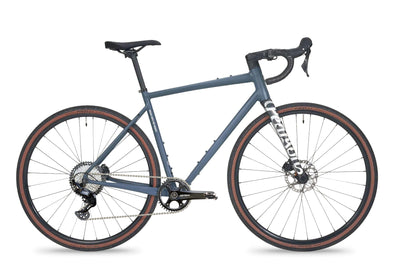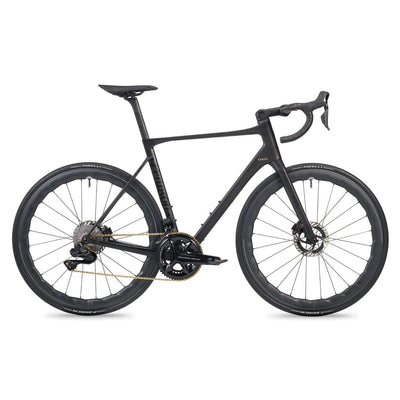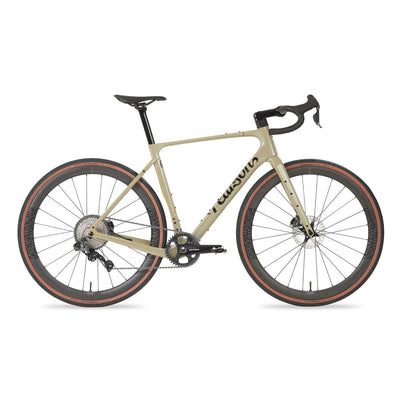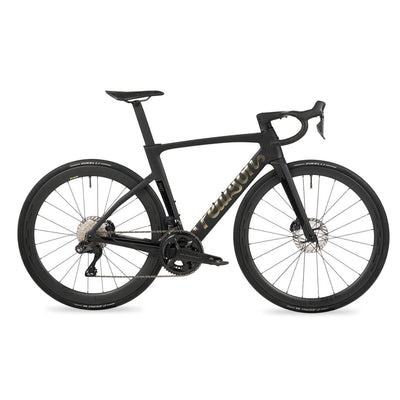Dura-Ace vs Ultegra A Comparison Of Excellence.
With the introduction of 12-speed Dura-Ace and Ultegra Di2, Shimano narrowed the options available and also the differences between its two top end groupsets. But there are still reasons why you might prefer one over the other.

We have previously posted about what’s new with Shimano Dura-Ace and Ultegra 12-speed. We didn’t differentiate much between the two groupsets for a good reason - they seem pretty identical in what they do and how they do it.
So what explains the significant difference in price between the two groupsets of around £1,400 by our reckoning? Here we’ll run through the differences between Dura-Ace and Ultegra 12-speed, but let’s start off with a quick refresher on what’s the same, as explained in a lot more detail in that previous post.

The commonalities of Dura-Ace and Ultegra
Both Dura-Ace R9200 and Ultegra R8100 are now electronic only and semi-wireless, with a wireless connection between the shifter levers and the derailleurs and a single in-frame battery powering both derailleur mechanisms. Shimano says that that’s a set-up that gives around 1,000km of riding between charges, with the shift levers each running for around two years on a coin cell.
The internals of the system are the same too: same electronics, same speed of shifting that’s up to 58% faster at the rear and 45% faster at the front and uses Hyperglide+ engineering copied from Shimano’s MTB groupsets. Both offer both rim brakes and disc brakes, with the discs now using Shimano’s Servo Wave tech that gives more progressive braking through the stroke and 10% greater retraction of the pads for less chance of brake rub.
Both offer a power meter too with the same claimed 2% accuracy for either option and both use disc brake rotors and chains from Shimano’s mountain bike groupset ranges. Both are also customisable over Bluetooth with the Shimano E-Tube app.

What’s the weight difference?
As with most things bike, the more you pay the less you get - at least weight-wise.
Depending on configuration we reckon that a complete Dura-Ace R9200 groupset weighs around 2438g while Ultegra R8100 comes in at 2716g, making Ultegra R8100 around 278g heavier. That weight difference is down to differences in materials and construction and is spread across the range of components, with Dura-Ace using more expensive materials.
Take the cassette for example, where there’s the largest weight gain with Ultegra. That’s because whereas all the sprockets in an Ultegra cassette are made of steel, for Dura-Ace the largest six sprockets in the 11-30t cassette and the largest seven in the 11-34t are made of titanium.
Shimano quotes a weight of 291g for an 11-30t for Ultegra as against 223g for Dura-Ace, a 68g difference. Go for the 11-34t cassette and the figures are 345g for Ultegra and 253g for Dura-Ace, a 92g difference. You’re likely to get better durability from Ultegra though, as well as saving yourself around £200.

You get small differences elsewhere too, with the Dura-Ace power meter chainset weighing around 748g, again dependent on configuration, 21g less than Ultegra. At 350g, the Dura-Ace shift levers are 41g lighter than Ultegra, while you’ll save 67g on a set of derailleurs, 53g on a pair of disc brake callipers and 35g if you want single pivot rim brakes.
Other components weigh exactly the same between the two groupsets: they both use the same battery for example, and whereas Shimano recommends MT900 rotors for Dura-Ace and MT800 for Ultegra, both weigh 200g for a 160mm rotor.
What are the differences in options?
Shimano still pitches Dura-Ace as the racer’s groupset while Ultegra is its premium all-rounder. So you’ll get some options for the fast rider in Dura-Ace that aren’t available in Ultegra.
At the chainset end, while both Dura-Ace and Ultegra have 52/36t and 50/34t options, only Dura-Ace has a 54/40t available. That’s the equivalent of the old “standard” 53/39t designed to give the racer a higher geared configuration. Both Dura-Ace and Ultegra offer crank arm lengths between 160mm and 175mm in 2.5mm increments, but only Dura-Ace has a 177.7mm crank length.
At the rear, both groupsets offer the same Hyperglide+ 11-30 and 11-34 tooth cassette ranges. At launch Shimano said that there would be an 11-28 in Dura-Ace only, but that’s still not commercially available. Again, that’s likely to be a racer’s choice with the majority of riders probably preferring a wider gear range and the option of going down to 1:1 for the steepest hills.

What’s the price difference?
At full retail price you’d pay around £3,500 for a complete Dura-Ace groupset without a power meter and £2,400 for Ultegra so as we mentioned above there’s around an £1,100 price differential for a complete groupset, a 45% premium for Dura-Ace. That’s made up of some big differences for individual components. A Dura-Ace rear derailleur, for example, retails for £700; Ultegra £380.
A Dura-Ace cassette is almost three times the price of an Ultegra one at £330 versus £120 and an M9100 XTR chain recommended for use with Dura-Ace is £57 as against £45 for the Deore XT chain that Shimano pairs up with Ultegra, so the price of consumable, high wear parts is also significantly different and you’d be paying more than double to replace the Dura-Ace parts.
It’s worth noting that there’s nothing to stop you mixing and matching, so you could replace a Dura-Ace cassette with an Ultegra one once it’s worn out and save yourself a significant chunk of cash.

Which should you choose?
The case for opting for Shimano Dura-Ace over Ultegra is increasingly less compelling for the 12-speed groupsets over their 11-speed predecessors. Yes, you’ll save yourself a little under 300g in weight by going Dura-Ace. But at full retail price you’re paying around £1,400 for the privilege.

Of course if you’ve got specific needs that Ultegra doesn’t support, like a high-geared 54/40t chainset or extra-long cranks then Dura-Ace is the only option. It’s attractive if you’re a sponsored racer and not paying for your components too! But for the majority of riders money is likely to be better spent on other upgrades like a flashier wheelset.
But if you’re after the full pro replica look and are willing to pay for it, then Dura-Ace does still add the finishing touch and looks beautiful.
Find out more: View Dura-Ace
Find out more: View Ultegra
.


